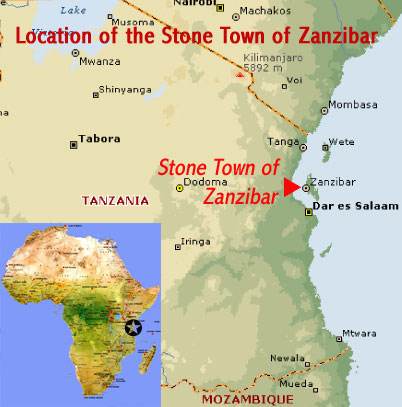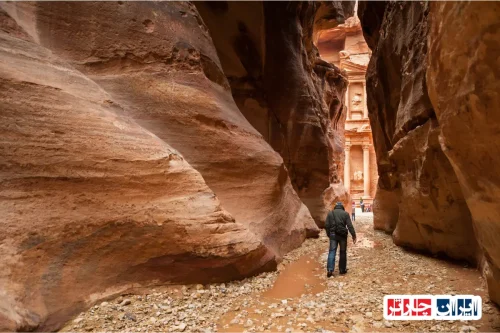Discover the Architectural Marvel of Burj Khalifa Dubai UAE: The Tallest Skyscraper in the World
Burj Khalifa Dubai UAE stands as an iconic symbol of modern engineering and architectural excellence. Rising majestically over the Dubai skyline, this skyscraper redefines urban development and showcases innovative design techniques. As the tallest building on the planet, it attracts millions of visitors annually who come to admire its breathtaking height and cutting-edge features. The structure’s unique design combines aesthetic appeal with structural resilience, making it a masterpiece of contemporary architecture. Its strategic location in Dubai UAE positions it as a central hub for business, tourism, and luxury living, cementing its status as a global landmark.
Unveiling the Unique Architectural Design of Burj Khalifa Dubai UAE
The architectural design of Burj Khalifa Dubai UAE draws inspiration from traditional Islamic patterns and regional motifs, blended seamlessly with modern engineering principles. Its tapering form mimics the desert flower, symbolizing growth and vitality. The building’s triple-lobed footprint provides stability and aesthetic harmony, while the setbacks create a spiraling effect that reduces wind load and enhances visual appeal. Advanced materials such as high-performance glass and reinforced concrete ensure durability against Dubai’s harsh climate. This innovative design not only maximizes space but also offers panoramic views of Dubai UAE, making it a true marvel of architectural ingenuity.
Engineering Breakthroughs and Construction Techniques in Burj Khalifa Dubai UAE
Constructing Burj Khalifa Dubai UAE involved pioneering engineering solutions to address its unprecedented height. The core structure employs a bundled tube design, distributing wind forces efficiently and ensuring stability. High-strength concrete was used for the foundation and core, capable of withstanding extreme loads. The construction process integrated cutting-edge crane systems and modular components, allowing for precise assembly at great heights. Additionally, the building’s HVAC and fire safety systems are tailored to operate efficiently at such elevations. These technological advancements exemplify the forefront of engineering innovation, setting new standards for skyscraper construction worldwide.
Luxury Interiors and Premium Facilities of Burj Khalifa Dubai UAE
Inside Burj Khalifa Dubai UAE, visitors and residents experience unparalleled luxury and comfort. The skyscraper houses world-class hotels, exclusive residences, and premium office spaces. The interior design combines modern elegance with traditional Middle Eastern accents, creating a sophisticated ambiance. Amenities include observation decks with panoramic city views, fine dining restaurants, fitness centers, and spa facilities. The building’s smart systems enable seamless automation and energy efficiency, enhancing the user experience. Every detail reflects a commitment to excellence, making Burj Khalifa Dubai UAE a symbol of opulence and innovation in urban living.
The Record-Breaking Heights and Technological Achievements of Burj Khalifa Dubai UAE
Burj Khalifa Dubai UAE holds multiple world records, including the tallest man-made structure and the highest observation deck. Its height surpasses 828 meters, setting a new benchmark in skyscraper engineering. The building features the fastest elevators, reaching speeds of up to 10 meters per second, transporting visitors swiftly across 163 floors. Its advanced lighting and cooling systems are designed to operate efficiently at extreme altitudes. These technological achievements demonstrate the pinnacle of modern construction and engineering capabilities, inspiring future skyscraper projects worldwide.
Innovative Engineering Solutions for Wind and Seismic Resistance in Burj Khalifa Dubai UAE
Designing Burj Khalifa Dubai UAE to withstand high wind forces and seismic activity required innovative engineering strategies. The building’s tapered shape reduces wind vortex effects, minimizing sway and ensuring occupant comfort. The structural core is reinforced with high-strength materials capable of absorbing seismic shocks. Tuned mass dampers installed at strategic points further mitigate vibrations caused by wind and earthquakes. These engineering solutions ensure the skyscraper remains resilient and safe, exemplifying the integration of safety and aesthetics in modern high-rise construction.
Environmental Sustainability and Green Technologies in Burj Khalifa Dubai UAE
Burj Khalifa Dubai UAE incorporates sustainable design principles and eco-friendly technologies. Its double-glazed façade reduces heat gain, decreasing cooling energy consumption. The building employs energy-efficient lighting and HVAC systems, utilizing smart controls for optimal performance. Water conservation measures include recycling greywater and low-flow fixtures. The integration of solar panels and renewable energy sources further enhances its sustainability profile. These initiatives demonstrate Dubai UAE’s commitment to environmental responsibility while maintaining the building’s iconic status.
Impact of Burj Khalifa Dubai UAE on Dubai’s Urban Development and Economy
Burj Khalifa Dubai UAE has significantly influenced Dubai’s urban landscape and economic growth. Its presence has spurred real estate development, tourism, and hospitality sectors, attracting global investors and visitors. The skyscraper serves as a catalyst for infrastructure upgrades and new business opportunities in Dubai UAE. Its iconic silhouette enhances the city’s global image, positioning Dubai as a leading destination for luxury, innovation, and modernity. The tower’s success has inspired numerous high-rise projects, shaping the future skyline and economic trajectory of Dubai UAE.
Tourism and Cultural Significance of Burj Khalifa Dubai UAE
As a symbol of Dubai UAE’s ambition and progress, Burj Khalifa attracts millions of tourists annually. Visitors flock to its observation decks for panoramic views, capturing stunning photos of the city and beyond. The tower hosts cultural events, light shows, and celebrations that showcase Dubai UAE’s vibrant spirit. Its presence fosters a sense of pride among residents and serves as a cultural icon representing innovation and progress. The skyscraper’s influence extends beyond architecture, becoming a symbol of Dubai UAE’s global identity and cultural dynamism.
Frequently Asked Questions about Burj Khalifa Dubai UAE
- What is Burj Khalifa Dubai UAE?
- Burj Khalifa Dubai UAE is the tallest skyscraper in the world, serving as an iconic symbol of modern engineering, luxury, and innovative architecture. It stands over 828 meters tall and features residential, commercial, and hospitality spaces, attracting millions of visitors annually.
- When was Burj Khalifa completed?
- Construction of Burj Khalifa was completed in 2010, with its official opening taking place on January 4, 2010, marking a new milestone in skyscraper engineering.
- What inspired the design of Burj Khalifa?
- The design draws inspiration from traditional Islamic patterns and regional motifs, resembling the desert flower. Its tapering form and spiraling setbacks enhance stability and aesthetic appeal, reflecting regional culture blended with modern engineering.
- How was the construction of Burj Khalifa achieved?
- The construction involved advanced engineering techniques such as bundled tube design, high-strength concrete, and modular construction methods. Special cranes and precise planning allowed assembly at extreme heights, ensuring safety and efficiency.
- What are the luxury features inside Burj Khalifa?
- Inside, the tower offers luxury hotels, high-end residences, and premium office spaces. Amenities include observation decks, fine dining restaurants, spas, fitness centers, and smart automation systems for comfort and convenience.
- What records does Burj Khalifa hold?
- Burj Khalifa holds multiple world records, including the tallest man-made structure, highest observation deck, and fastest elevators reaching speeds of 10 meters per second across 163 floors.
- How does Burj Khalifa resist wind and seismic forces?
- The building’s tapered shape reduces wind vortex effects, and reinforced structural core absorbs seismic shocks. Tuned mass dampers further mitigate vibrations, ensuring stability and safety during high winds and earthquakes.
- What sustainable technologies are incorporated in Burj Khalifa?
- It features double-glazed façades, energy-efficient lighting, smart HVAC systems, water recycling, and solar panels, all aimed at reducing environmental impact and promoting sustainability.
- How has Burj Khalifa impacted Dubai’s development?
- It has spurred real estate growth, tourism, and infrastructure development, positioning Dubai as a global hub for luxury and innovation, and inspiring future high-rise projects in the region.
- What is the significance of Burj Khalifa for tourism?
- As a cultural icon, it attracts millions of tourists who visit its observation decks, attend events, and enjoy panoramic views, reinforcing Dubai’s reputation as a top travel destination.
- Are there any special features for visitors?
- Yes, visitors can enjoy panoramic city views from observation decks, dine in luxury restaurants, and participate in cultural events and light shows hosted at the tower.
- What safety measures are in place in Burj Khalifa?
- Advanced fire safety systems, seismic-resistant design, high-speed elevators with safety features, and regular maintenance ensure the safety of occupants and visitors.
- How does Burj Khalifa contribute to Dubai’s economy?
- It boosts tourism, attracts international investors, and enhances Dubai’s global image, creating jobs and fostering economic diversification in the region.
- What future developments are planned around Burj Khalifa?
- Ongoing developments include luxury hotels, commercial spaces, entertainment venues, and infrastructure projects aimed at further transforming Dubai’s skyline and urban landscape.
- Why is Burj Khalifa considered an architectural marvel?
- Because of its record-breaking height, innovative design inspired by regional motifs, advanced engineering solutions, and its role as a symbol of modernity and progress in architecture.
























